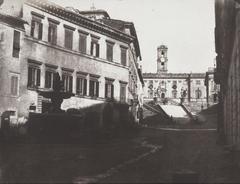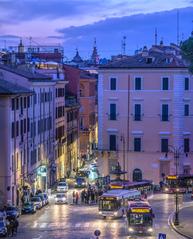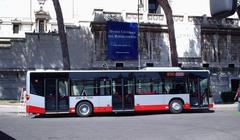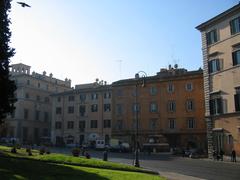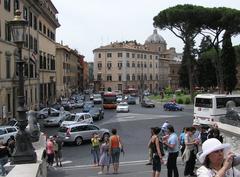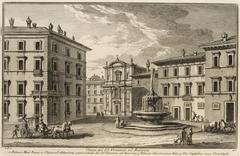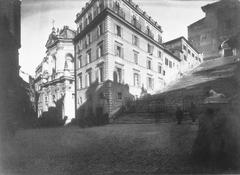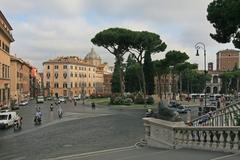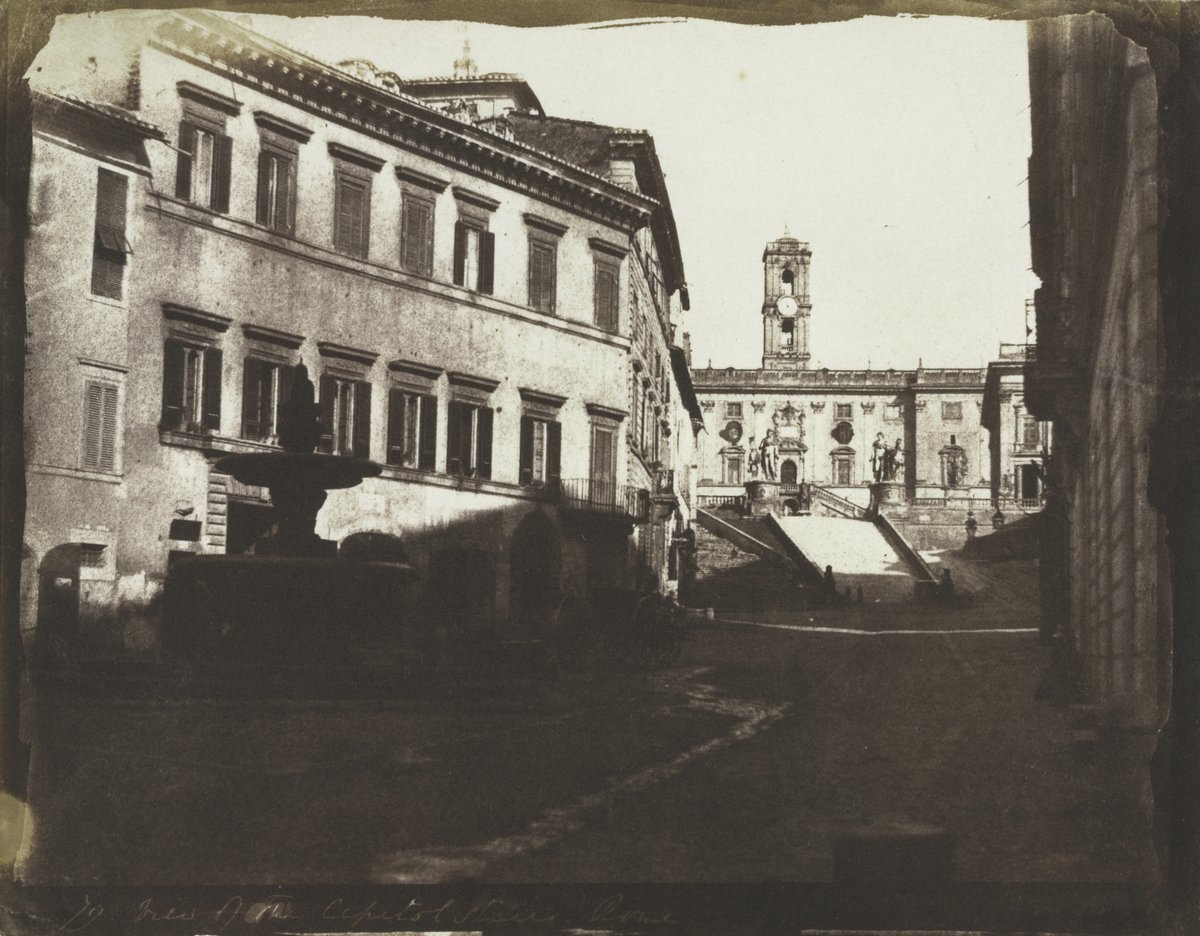
Piazza d’Aracoeli Rome: Visiting Hours, Tickets, and Historical Sites Guide
Date: 14/06/2025
Introduction
At the foot of Rome’s legendary Capitoline Hill, Piazza d’Aracoeli stands as a vibrant crossroads of history, art, and daily Roman life. Framed by architectural marvels such as the Basilica di Santa Maria in Aracoeli and Renaissance palazzi, this historic square is both a gateway to the Eternal City’s storied past and a lively urban hub. From ancient Roman roots and medieval marketplaces to Renaissance urban redesign and modern restoration, Piazza d’Aracoeli invites visitors to experience Rome beyond the obvious landmarks. Its enduring appeal lies in its ability to blend centuries of cultural evolution with the energy of the present day (Roma Segreta; Turismo Roma; Touristation; Rome City Now).
Table of Contents
- Introduction
- Visiting Hours and Ticket Information
- Accessibility and Travel Tips
- Historical Overview
- Cultural Significance and Events
- Nearby Attractions
- Practical Visitor Information
- Visuals and Interactive Media
- Frequently Asked Questions (FAQ)
- Plan Your Visit
- References and Further Reading
Visiting Hours and Ticket Information
- Piazza d’Aracoeli: Open to the public 24 hours a day, year-round, with no admission fee.
- Basilica di Santa Maria in Aracoeli: Generally open daily from 9:00 AM to 6:00 PM (hours may vary during religious holidays). Entry is free; donations are welcomed.
- Guided Tours: Organized tours that include the piazza and surrounding sites range from €25–€50. Booking in advance is recommended, especially during peak seasons.
- Nearby Museums:
- Capitoline Museums: Tuesday–Sunday, 9:30 AM–7:30 PM (last entry 6:30 PM). Adult tickets: €15.
- Insula Romana: 10:00 AM–6:00 PM. Tickets: €10.
Accessibility and Travel Tips
- Wheelchair Access: The piazza is accessible and flat, though the 124-step staircase to the basilica is steep and not suitable for all; alternative access to the Capitoline Hill is available via Michelangelo’s Cordonata ramp.
- Transport Links: Centrally located, the piazza is a short walk from Piazza Venezia, with numerous bus lines stopping nearby. The Colosseo metro station is a 15-minute walk away (ATAC Roma).
- Best Times to Visit: Early mornings and late afternoons offer fewer crowds and optimal lighting for photography.
- Amenities: Dining options, cafes, and restrooms are available in adjacent neighborhoods.
Historical Overview
Origins and Early Development
Piazza d’Aracoeli’s history is deeply rooted in ancient Rome. The square’s location, adjacent to the Capitoline Hill and the Roman Forum, made it a central civic and religious meeting point since antiquity. Its name derives from the Basilica di Santa Maria in Aracoeli, established atop the ruins of the Temple of Juno Moneta in the 6th century CE (Rome Art Lover). Archaeological sites nearby, such as the Insula Romana, provide insights into daily Roman life.
Medieval and Renaissance Transformations
During the Middle Ages, the square was a bustling marketplace and a venue for public announcements, executions, and festivals. The construction of the basilica’s monumental staircase in 1348, commemorating the city’s deliverance from the Black Death, is a notable medieval legacy (Sacred Destinations). The Renaissance era brought urban redesign, with Michelangelo’s vision for the nearby Capitoline Hill elevating the square’s importance and aligning it with Rome’s new civic ideals.
Architectural Highlights
- Basilica di Santa Maria in Aracoeli: An austere Romanesque-Gothic church, famed for its Cosmatesque floor, Pinturicchio’s frescoes, and the revered wooden Santo Bambino statue.
- Palazzo Massimo di Rignano (Colonna): A Renaissance palace attributed to Carlo Fontana, featuring a grand entrance, crenellated tower, and decorative details (Wikipedia).
- Palazzo Muti-Bussi and Palazzo Pecci-Blunt: Examples of the noble residences that define the square’s architectural character (Rome City Now).
- Fontana di Piazza d’Aracoeli: A late Renaissance fountain designed by Giacomo della Porta (1589), recently restored and celebrated for its artistic and social value (Turismo Roma).
Urban Changes and Modern Interventions
The construction of the Vittoriano monument (Altar of the Fatherland) in the late 19th century and Fascist-era urban renewal projects dramatically altered the square, replacing medieval neighborhoods with grand open vistas. These changes shifted the piazza from an intimate market to a prominent civic space, integrating it more closely with Rome’s monumental core (Roma Capitale).
Cultural Significance and Events
Piazza d’Aracoeli has long served as a center for civic and religious life. It was historically the site of public proclamations, religious processions, and festive events. Notable traditions include the annual Epiphany fair and Christmas nativity displays in the basilica, which continue to draw both locals and visitors (Romeing). The square remains a beloved gathering space for demonstrations, celebrations, and daily Roman life.
Nearby Attractions
- Capitoline Museums: One of the world’s oldest public museums, housing ancient Roman art and artifacts.
- Roman Forum and Palatine Hill: Iconic ruins of ancient Rome, a short walk away.
- Teatro di Marcello: Ancient open-air theater near the square.
- Vittoriano Monument: Offers panoramic views from its terraces.
- Via del Corso: Bustling shopping street nearby.
Practical Visitor Information
Accessibility
- The piazza is generally accessible, though the basilica’s staircase may be a challenge for some. Alternative, more gradual access to the Capitoline Hill is available.
Guided Tours and Tickets
- Guided walking tours are widely available and provide insights into the square’s history and architecture. Booking ahead is advised, especially during the 2025 Vatican Jubilee, which will bring increased tourism (Untold Italy; Italy Perfect).
Dining and Restrooms
- Numerous cafes, trattorias, and gelaterias are located within walking distance, especially along Via del Corso and in the Monti district (Romewise).
- Restroom facilities are available in museums and some nearby establishments.
Visuals and Interactive Media
For virtual explorations, high-quality images and interactive maps of Piazza d’Aracoeli, its staircase, and surrounding landmarks are accessible via Turismo Roma and Touristation. Alt tags such as “Piazza d’Aracoeli visiting hours,” “Basilica di Santa Maria in Aracoeli tickets,” and “Rome historical sites panorama” enhance the accessibility and searchability of these resources.
Frequently Asked Questions (FAQ)
Q: What are the opening hours for Piazza d’Aracoeli?
A: The piazza is open 24/7. The Basilica di Santa Maria in Aracoeli is typically open daily from 9:00 AM to 6:00 PM.
Q: Is there an entrance fee?
A: Access to both the piazza and the basilica is free. Donations for the basilica are appreciated.
Q: Are guided tours available?
A: Yes, numerous local operators offer tours that include Piazza d’Aracoeli and nearby attractions. Booking in advance is recommended.
Q: Is the area accessible for visitors with disabilities?
A: The piazza is accessible, but the main staircase to the basilica is steep. Alternative routes to the Capitoline Hill are available.
Q: What are the best times to visit?
A: Early mornings and late afternoons provide the best light and fewer crowds.
Plan Your Visit
Piazza d’Aracoeli is a living testament to Rome’s layered history. As a starting point for exploring the Capitoline Hill, Roman Forum, and the city center, it offers both practical accessibility and a wealth of cultural riches. For the latest updates, guided audio tours, and event information, download the Audiala mobile app and follow us on social media for insider tips and special features.
Summary
Piazza d’Aracoeli captures the essence of Rome: ancient foundations, medieval resilience, Renaissance artistry, and modern urban life. Its accessibility, rich historical context, and proximity to major attractions make it a must-see for every visitor. Whether you’re seeking art, architecture, history, or simply a place to soak in the atmosphere of Rome, this piazza promises a memorable and enriching experience. As Rome prepares for major events like the 2025 Vatican Jubilee, planning your visit ahead using official resources and guided tours will ensure a smooth and rewarding journey (Roma Segreta; Turismo Roma; Touristation; Rome City Now).
References and Further Reading
- Roma Segreta – Piazza d’Aracoeli
- Turismo Roma – Fontana di Piazza d’Aracoeli
- Rome City Now – Piazza d’Aracoeli
- Turismo Roma – Ara Coeli Steps and Basilica
- Touristation – Visitor Services
- Wikipedia – Piazza d’Aracoeli
- Rome Art Lover – Basilica & Piazza
- Capitoline Museums
- Sacred Destinations – Santa Maria in Aracoeli
- Roma Capitale
- Wanted in Rome – Markets & Events
- Romeing – Epiphany in Rome
- ATAC Roma – Public Transport
- Romewise – Dining near Piazza Venezia
- Untold Italy – Jubilee 2025 Tips
- Italy Perfect – Jubilee in Rome
Plan your Roman adventure today and let Piazza d’Aracoeli be your gateway to the wonders of the Eternal City!

